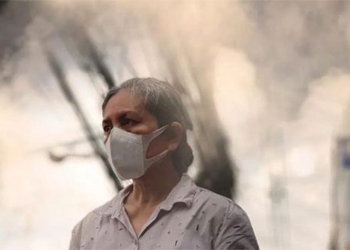As antibiotic-resistant bacteria are on the rise globally, researchers from Canada and France have found them in an intriguing location: clouds in the sky.
According to New Atlas, researchers from Laval University in Quebec (Canada) and Clermont Auvergne University (France) began investigating clouds drifting around an inactive volcano in the Massif Central region of France.

Antibiotic-resistant bacteria found everywhere, even in clouds – (Photo: NEW ATLAS)
Working at a weather station located 1,465 meters above sea level on the Puy de Dôme, the team conducted 12 cloud sampling sessions over the course of two years.
They discovered that the clouds contained approximately 8,000 bacteria per milliliter of water, along with an average of 20,800 copies of antibiotic resistance genes in the same volume.
Notably, the clouds over the ocean harbored different types of antibiotic resistance genes compared to those solely drifting over land.
While the atmosphere has long been recognized as a conduit for bacteria, researchers were surprised to find that the bacterial levels in the clouds were comparable to those found on the ground.
These bacteria typically reside on plant surfaces or soil. They are aerosolized by wind or human activities, and some rise into the atmosphere to participate in cloud formation.
According to the study’s authors, the high concentration of antibiotic resistance genes in elevated clouds may be linked to antibiotic use in livestock farming. Particularly in large-scale cattle and sheep farming, these animals often belch after eating, releasing methane gas that contributes to the greenhouse effect.
“Our study shows that clouds are an important pathway for the spread of antibiotic resistance genes”, said Florent Rossi from Laval University, a co-author of the study.
The research has been published in the journal Science of The Total Environment.
|
Antibiotic-resistant bacteria kill millions each year According to the Centers for Disease Control and Prevention (CDC), antibiotic-resistant bacteria and fungi are responsible for the deaths of at least 1.27 million people worldwide each year. Combating these superbugs is becoming increasingly challenging, although researchers are exploring several new methods, including the use of gold, self-assembling “nanonets,” and redesigning antibiotics. |





















































